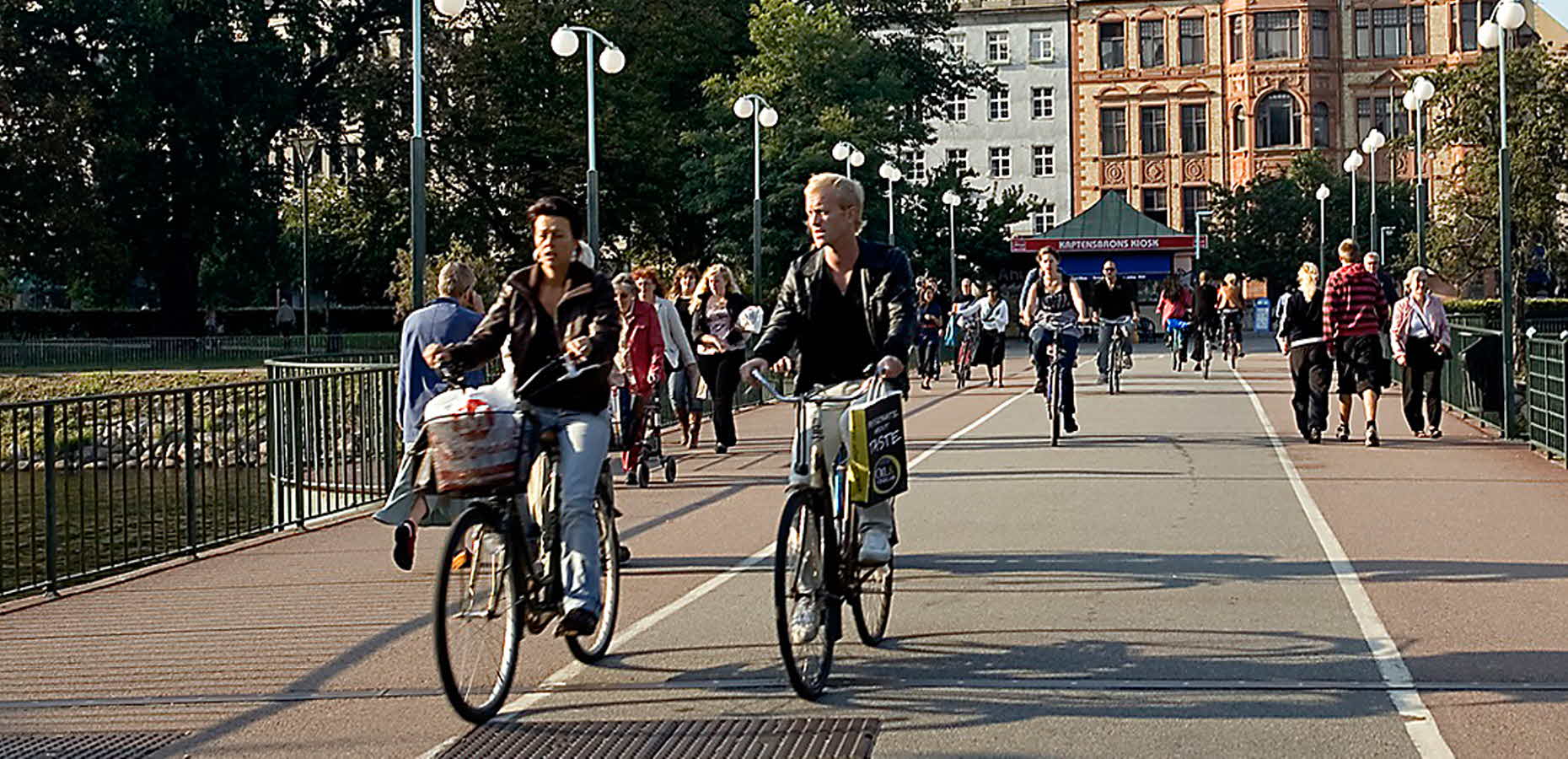“I believe that the goal of a fossil-free city is achievable in terms of transportation,” says Mia Häggström, Fabege’s Head of Sustainability. “But changing existing infrastructure is a major challenge. Like most other cities, Stockholm was built to suit car traffic and we need to rethink this.”
Transport needs to be reduced
In just a few years’ time, 2020, Stockholm’s target is to release a maximum of 2.3 tonnes carbon dioxide per inhabitant, which will primarily mean a substantial reduction in car traffic. To achieve this target, we need to promote cycling, electric cars or greater use of public rail services. When constructing new offices, Fabege builds bike parking for 25 per cent of all employees, and work is under way to increase the number of charging stations for electric cars in the car park.
“The best thing we can do for the environment is to travel less,” comments Mia. “Offices should be close to services, so employees can run errands near where they work and don’t have to travel so much.”
By having greater control of when and how travel to companies happens, you can both reduce the amount of journeys and enhance the street environment, with lower noise levels, less congestion and improved air quality.
“For example, we encourage tenants to use the same company for waste management,” says Mia. “It cuts the number of heavy truck journeys compared with if tenants in a building all choose different waste contractors.”
Intelligent technology solves problems
According to many, new technology is the solution to the climate challenge, because it can help us achieve efficiency gains. An intelligent technical solution for heating and cooling properties now being used in new buildings is VAV, or variable air volume. The ventilation level is adjusted based on where people are in the building.
“In existing buildings we’re working with different types of climate shell solutions to reduce the need for heating and cooling,” explains Mia. “It might involve additional glazing, sunscreening and replacing windows. We also supplement this with local electricity production in the form of solar cells, geothermal heating and geothermal cooling. All purchased electricity in our properties is also generated from wind power.”
Mia’s top three climate tips for companies
- Review your logistics. What’s your goods transportation like? Is there any possibility of achieving efficiency gains by coordinating journeys?
- Ask your suppliers to cut back on the amount of packaging they use. For example, can goods be delivered in reusable crates? It cuts carbon dioxide emissions in production and produces less rubbish.
- Encourage employees to use low-carbon forms of transport. It’s good for the environment and for your health. Fabege works according to CERO, a model that helps companies achieve climate goals in relation to travel. Find out more about CERO.



